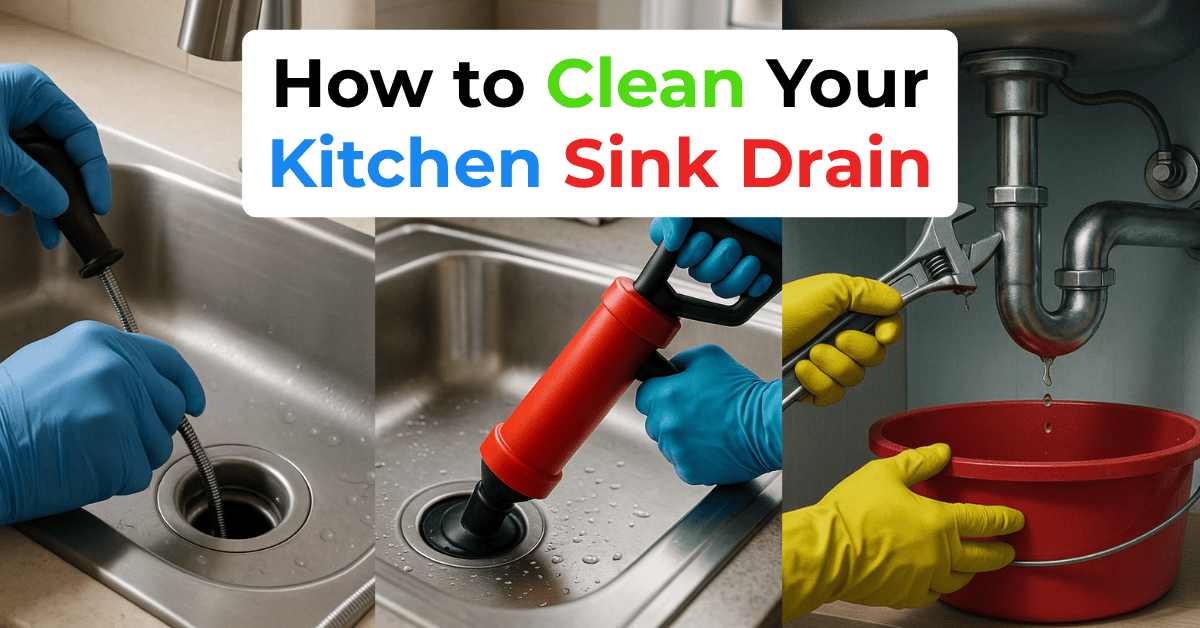This post may contain affiliate links. When you purchase through links on our site, we may earn an affiliate commission. Read our affiliate disclosure
Does your kitchen sink leak, emit an odor, or drain slowly? Don’t worry, you are not alone who is facing the issue. It is annoying to have a ‘dirty’ sink in our household. Fortunately, you can clear even the most stubborn kitchen sink without a professional’s help because most of the ingredients are within easy reach around the house. So why go for professionals?
Here, I shared a simple guide to help you clean your kitchen sink drain without overspending. Following the steps outlined below will help restore your kitchen sink to a clean, odor-free, and unclogged state.
6 Easy Ways to Clean Your Kitchen Sink Drain
Method 1: Start by Flushing with Hot Water
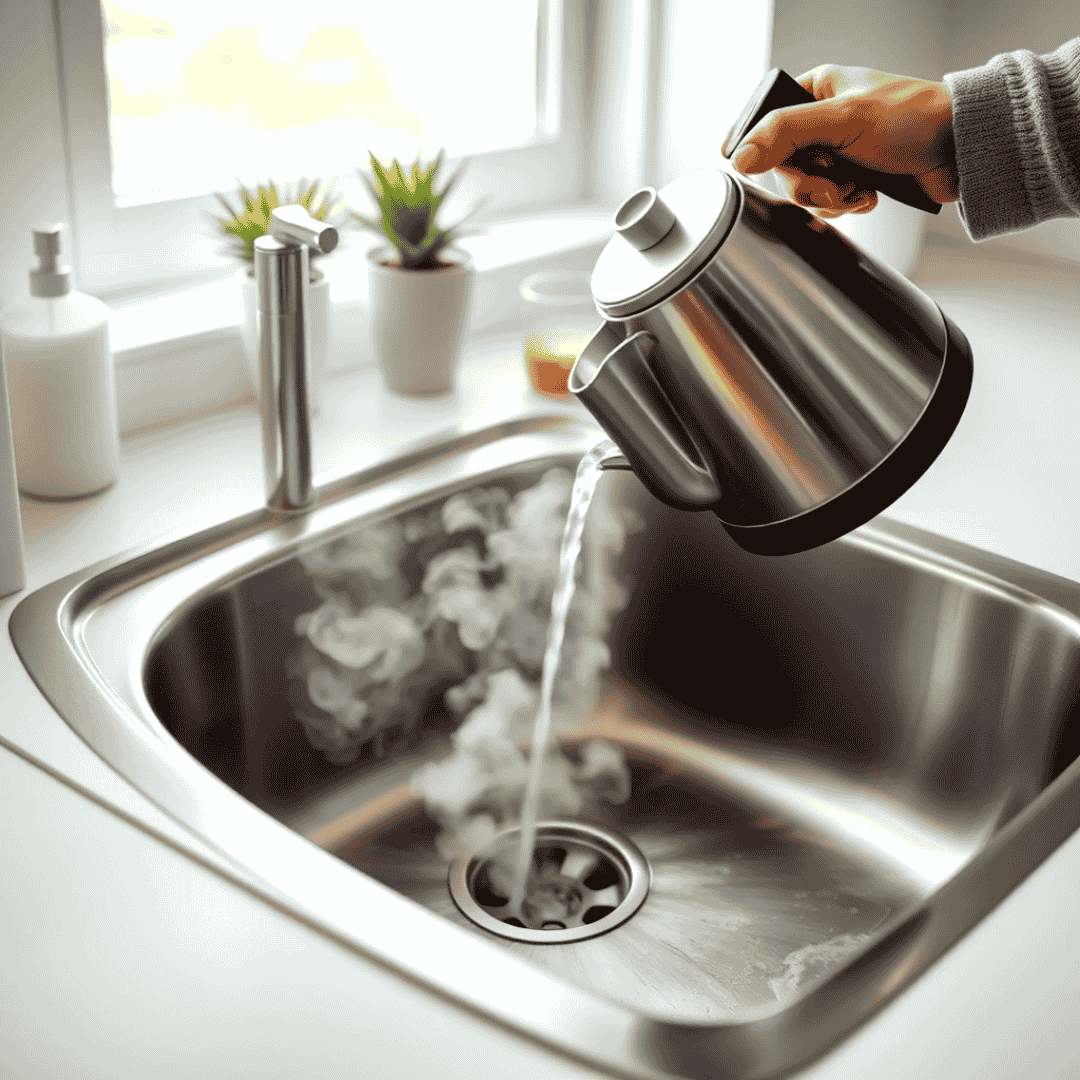
Before doing anything else, try the easiest and most effective way. What’s that? Pouring hot water down your drain is one of the most efficient methods of clearing grease and food particles from your pipes.
Here’s how to do it:
Take a kettle or pot and boil water ( 100 °C). Pour it down the drain. Boiling water is perfectly fine to use on metal pipes. If your pipes are plastic, however, make sure to let the water cool a bit first to avoid damaging your pipes.
Note: Slowly pour water directly into the drain. If you find out the water is moving easily, then congratulations!!!! You have cleaned the clogged drain.
Method 2: Clean with Natural Cleaners: Baking Soda and Vinegar
Chemical drain cleaners often have negative effects on your plumbing as well as the environment. This is why we recommend using natural cleaners (baking soda and vinegar). Here’s a simple guide on how to use them to clean your sink drain.
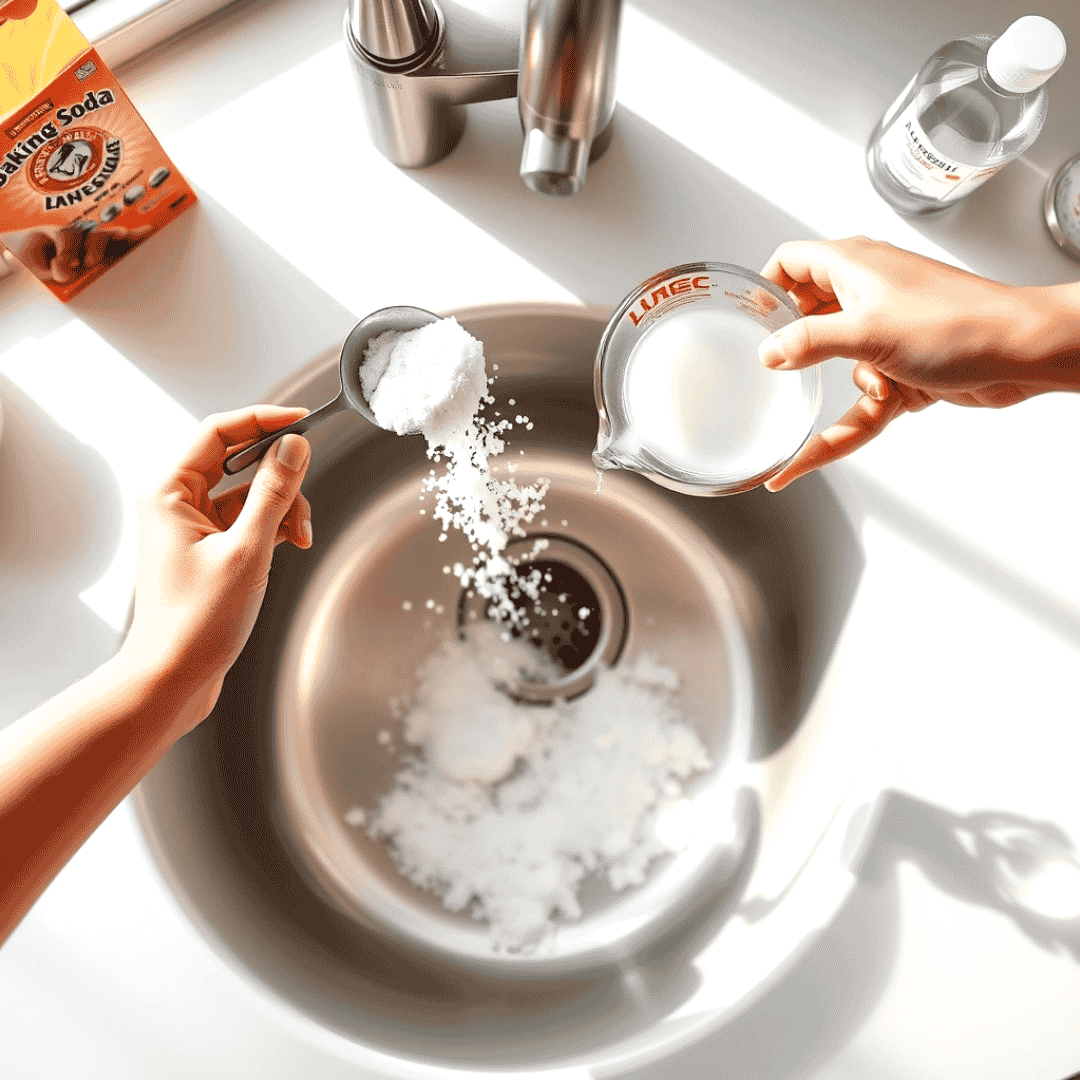
Step 1: Add Baking Soda
Put approximately 220 grams or 1 cup of baking soda into the drain directly. It may help to use the end of a spoon or a butter knife to push the powder into the opening if it clumps at the top.
Let the baking soda sit for 10–15 minutes. This gives it time to neutralize odours and start breaking down any built-up grime inside the pipes.
Step 2: Pour Hot Vinegar
In a small pot or kettle, boil about 3 cups (710 ml) of distilled white vinegar. Once it starts to bubble, remove it from the heat.
Pour the vinegar down the drain gently, little by little. The mixture will fizzle and bubble as it interacts with the baking soda. This will help in breaking down any residue and removing gunk.
Step 3: Wait and Rinse
Let the mixture sit in the drain for 5–10 minutes. The bubbling helps dislodge debris, while the acidity of the vinegar kills odor-causing bacteria.
After that, boil another pot of water and flush it down the drain. This final rinse clears out anything left behind and leaves your drain fresh and clean.
How often should you clean your sink drain?
To make your drain clear and odorless, do this once a week.
Extra Tips:
You can also add a fresh touch with natural scents. For an extra touch of cleanliness, add some Lemon juice or a drop or two of essential oil, bathing the natural scent as well.
A great approach to preventing the annoying scent would be pouring lemon juice and baking soda in equal proportions down the drain, topped with hot water. This does wonders for building and leaves a pleasant aroma.
Method 3: Use a Plunger for Slow-Draining Sinks
If your sink is draining slowly or there’s standing water, there may be a clog forming. You have to use a plunger to clean your sink drain. It is a simple tool that is used to clean blockages in drains, sinks, toilets and other plumbing fixtures.
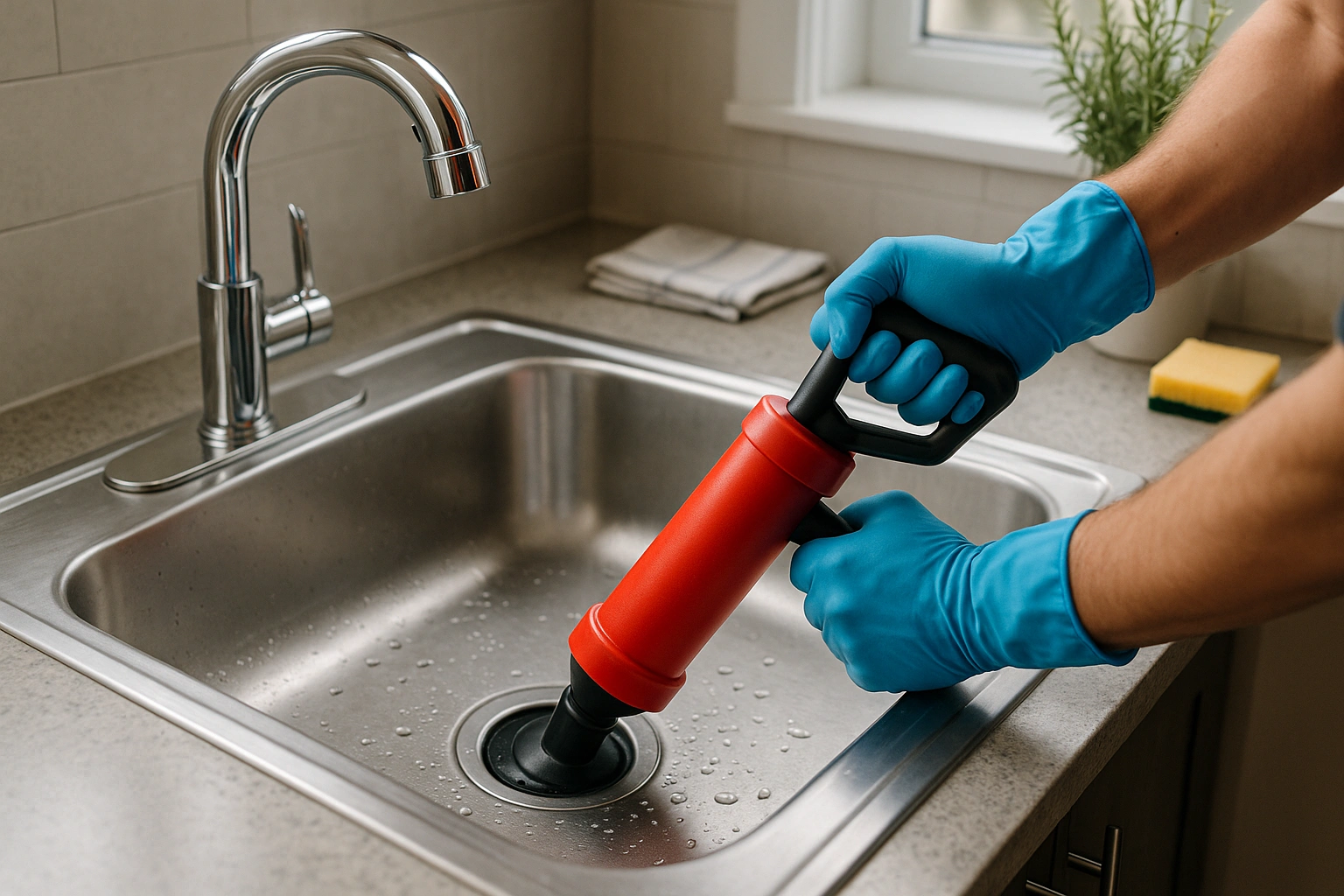
Here’s how to use a sink plunger:
- Position the plunger’s rubber cup over the drain until a seal is achieved.
- Next, you have to push down gently, then immediately pull up. Repeat this plunging motion twenty to thirty times.
- Block the second drain with a wet rag if you have a double sink. This will aid in increasing suction power.
- When finished, make sure to run hot water down the drain to flush out the debris that has been loosened.
- Usually, this method alleviates most small clogs without disassembling anything.
Method 5: Clean Out the Sink Trap
If plunging doesn’t work, the clog might be stuck in the sink trap. The curved U-shaped pipe beneath your sink. Here’s how to clean it.
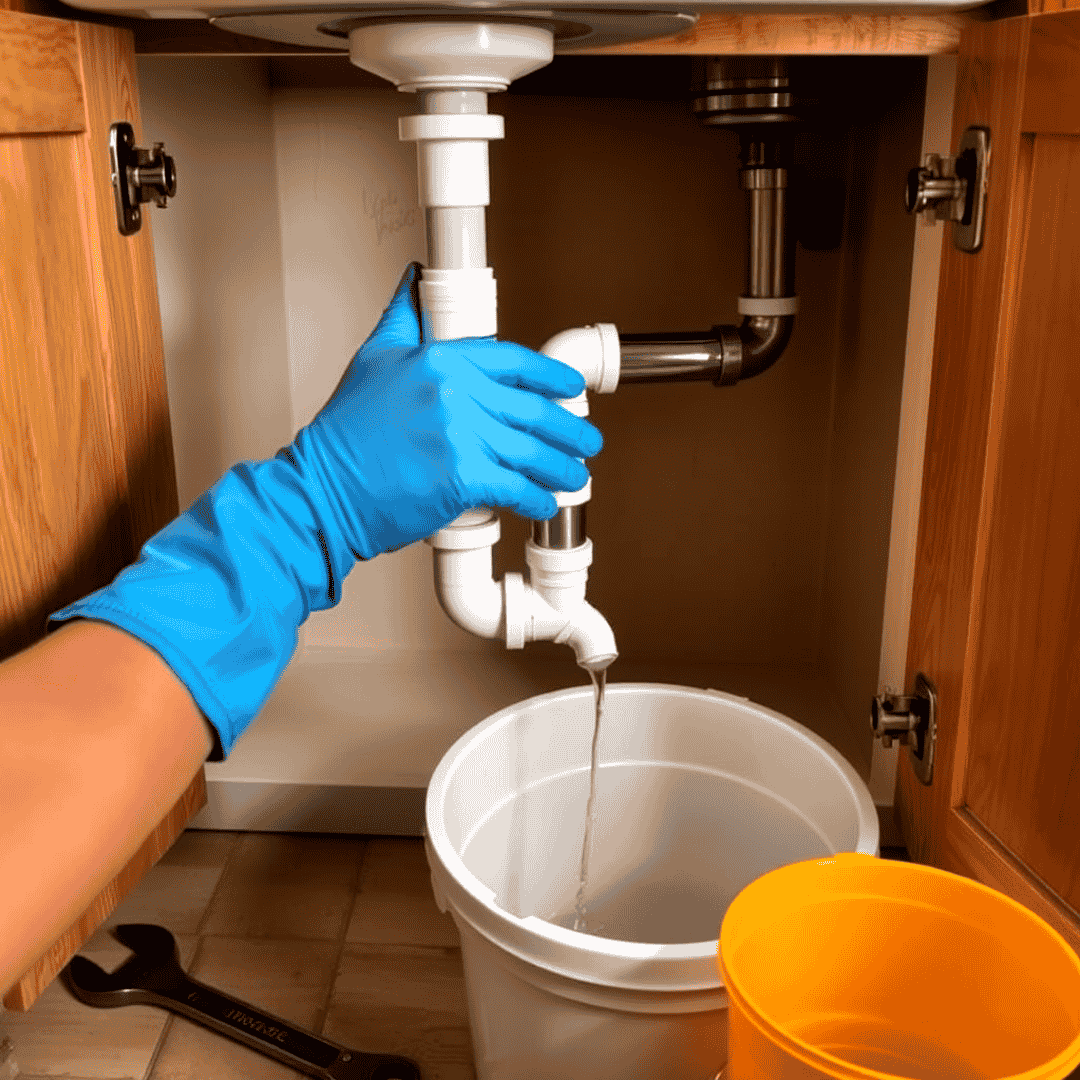
- To clean it, first, use a bucket or any sort of bowl and place it below the trap to catch water
- Use a wrench or your hands to unscrew the pipe connectors.
- Remove the trap and rinse it out in another sink or with a garden hose.
- If debris is stuck, use a bottle brush or a wire hanger to clean the inside thoroughly.
- Once clean, reattach the trap and run water to ensure it’s working properly.
This can be a bit messy, so avoid using the sink until everything is secured back in place.
Method 6: Use a Plumber’s Snake for Deep Clogs
If all else fails and your drain is still blocked, the clog may be deeper in the pipes. A plumber’s snake (also called a drain auger) is a flexible, coiled tool. It is designed to reach further down the pipe. You can purchase on Amazon or at your local hardware store.
Insert the snake into the drain and twist until you feel resistance. Then rotate and push gently to break through the clog. Pull it out slowly and rinse the drain with hot water to wash away the loosened debris.
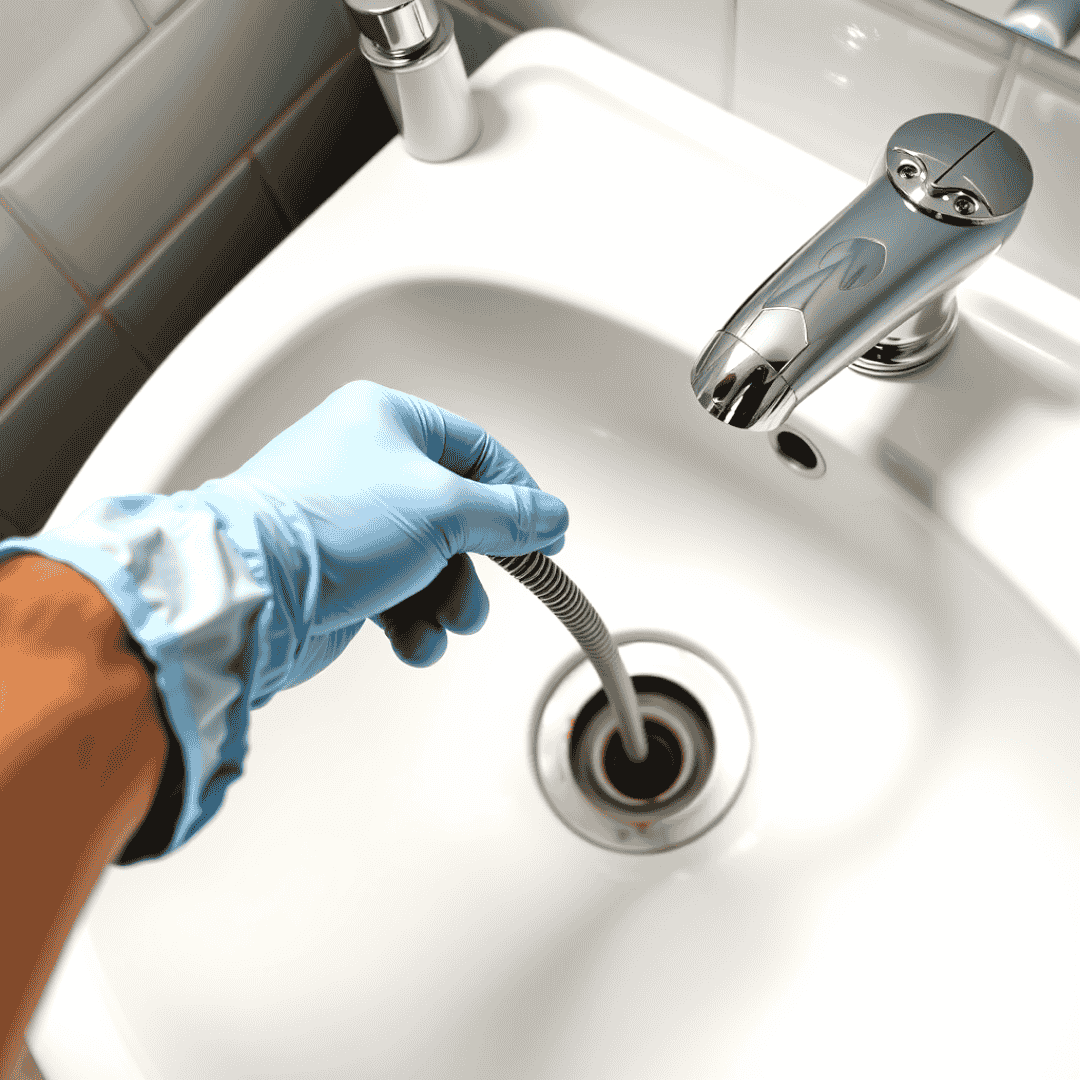
Final Thoughts
I hope you have a clear idea about cleaning the kitchen sink drain. Cleaning a kitchen sink drain doesn’t have to involve harsh chemicals or a call to the plumber. With a few pantry staples and simple tools, you can handle most clogs and odors yourself. The key is regular maintenance—flush, deodorize, and clean weekly. Follow the process, and you’ll rarely have to deal with a blocked or smelly sink again.
Read also:
How to Keep Kitchen Clean and Organized: 15 Practical Tips That Work
How to Update Old Kitchen Cabinets Without Replacing Them? – 7 Unique Tips and Ideas
How to Organize the Space Under the Kitchen Sink?
How to Remove Stains from Kitchen Countertops: A Step-by-Step Guide

My name is Mostarefa. I am an expert in home improvement. With 10 years of experience in the world of home improvement, I have started this blog to empower readers to make confident design choices and cultivate beautiful, functional living spaces. In this blog, I talk about trending home improvement ideas, as well as cleaning and organizing tips.
